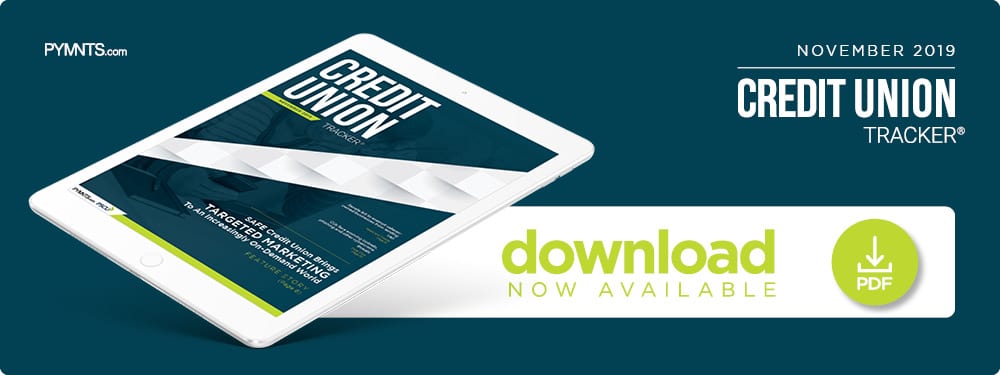SAFE Credit Union Brings Targeted Marketing To An Increasingly On-Demand World

Meeting customers’ expectations and desires is a key goal for all enterprises, and credit unions (CUs) are no exception. PYMNTS’ Credit Union Innovation Index found that CU members may not prioritize the latest technologies as much as bank and FinTech customers do, but they still value easy-to-use mobile apps and online capabilities. Credit unions are, therefore, focusing on providing these services to avoid losing members to technologically superior financial institutions (FIs).
One CU upgrading its mobile technology is SAFE Credit Union, which has more than $2.3 billion in assets, and approximately 235,000 members. It catered exclusively to Sacramento Army Air Corps employees when it started in 1940, but the world has changed significantly since then — as have members’ expectations.
“All of our members are now super accustomed to an on-demand world, with … Uber and Lyft and Seamless and Grubhub and Amazon Prime,” Grace Roberto, SAFE’s senior digital product manager, recently told PYMNTS. “Now, all of that is affecting SAFE as well. Member expectations for a really wonderful and seamless user experience in the digital space translate to that same expectation from SAFE.”
SAFE has been delivering on-demand experiences since 2016, when it launched a targeted marketing function on its mobile app. The CU leverages this capability to provide customers with instantly accessible promotions and special offers, and the company is now working to balance its outreach efforts and member privacy.
Meeting Members Where They Are With Promotions
SAFE leverages a targeted marketing tool with geofencing, messaging capabilities and push notifications to provide tailored promotional experiences. The platform integrates with the company’s mobile app, and uses geofencing to securely track members’ locations in predetermined areas, allowing SAFE to deliver targeted advertising based on their activities outside the CU.
“Say a member has opted into a 5 percent cash-back program, for example,” Roberto explained. “If they were … near a Barnes & Noble for a [certain] period of time, they could receive a push notification to remind them that if they [used] their Cash Rewards card, [they would] get that extra 5 percent back.”
She pointed to a sponsorship deal with Papa Murphy’s Park, home of the Sacramento Republic Football Club, as another example. SAFE members who entered the geofenced stadium received messages, notifying them that if they used their debit or credit cards while on location, they would be automatically entered into a sweepstakes for free tickets and a catered dinner.
The app can provide public service announcements in addition to promotional materials, and SAFE recently used this capability to inform its members when some of its Visa-branded credit cards experienced an outage. Member services employees saw significant drops in both call center and live chat volumes as a result, improving the CU’s back-of-house efficiencies.
Crunching The Numbers
Roberto said the largest hurdle associated with SAFE’s outreach efforts is understanding and leveraging the vast amount of member data collected through its marketing tool. This information must also be combined with the credit union’s other data sources to provide holistic views of members’ desires, financial journeys and needs. Further complicating the issue is the data’s organizational structure, as information can be stored in the CU’s data warehouse, structured query language databases or unstructured data lakes.
“SAFE is going through a lot of internal working to bring about the right framework in which to [analyze this data],” Roberto said. “We have a data governance committee and an analytics committee, which have both come together within the last year and a half or so, so that we [can] set the right framework.”
The credit union is also pooling its sources into a Salesforce database, which will allow the CU to offer deeper insights into members’ financial journeys. The initiative aims to layer different data sources — including information about market segmentation, members and transactions — as each becomes relevant to the CU’s understanding of its members.
“It’s definitely an initiative that we’re in the midst of, and not at the end line or anything, but that’s the overall vision for SAFE,” she said.
Member Privacy Concerns
Roberto said striking a balance between actionable marketing and member privacy is a key priority for the CU’s targeted outreach program. Navigating these concerns is a challenge facing all businesses that deploy targeted ad strategies, but it is particularly critical for organizations with intimate knowledge of customers’ personal finances.
“We have had a lot of internal discussion [about] that line between useful and helpful versus creepy and unwanted,” she stated. “Any time we’re launching a new campaign that has a type of geolocation-based trigger, we rely very heavily on our compliance and marketing teams to keep these campaigns compliant, and to have the right phrasing so it’s not invoking any type of creep factor.”
Members are generally accustomed to targeted marketing campaigns, however, and they even expect the businesses they patronize to send them highly personalized messages. Roberto said this is largely a result of the on-demand world created by Silicon Valley companies like Uber and Grubhub, with consumers applying similar standards to CUs. In fact, members could have even higher expectations for their FIs than they do for technology firms.
“There’s a level of trust in a credit union — that they have members’ interests and financial well-being top of mind,” she explained. “That may not be the case for these enormous tech companies that don’t necessarily see that customer as anything but a certain profit value, and that’s it.”
SAFE and other CUs are seeing benefits from leveraging personalized marketing efforts that cater to members’ expectations, but betraying their trust with intrusive campaigns could have devastating consequences. Targeted marketing may help credit unions fit into the increasingly on-demand world, but they would be wise to examine their approaches and ensure that they do not take such programs too far.

